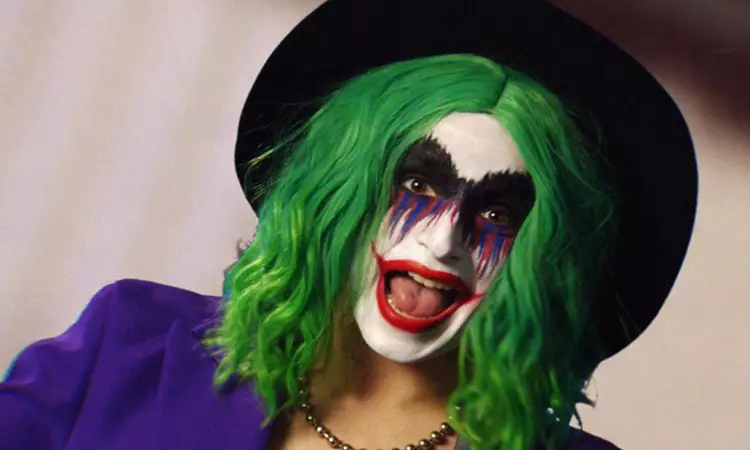In a remarkable fusion of creativity and defiance, Vera Drew’s “The People’s Joker” represents not just a film, but a cultural movement within the superhero genre. Premiering at the Toronto Film Festival over two years ago, this daring parody has achieved considerable acclaim, primarily through the bustling buzz generated by its fiercely loyal fanbase. Unlike traditional superhero narratives bowing to franchise formulas, Drew’s project operates in a realm of independence, featuring a distinctive storytelling method that both pays homage to and subverts established comic book lore.
Drew’s film is not solely a product of her individual talent; rather, it is a tapestry woven from contributions by countless creators who share a passion for the expansive universes found within DC comics, television series, and films. By employing an entirely green-screen environment, the film embraces a raw aesthetic that enhances its ludicrous nature and showcases a bold artistic vision. The joyous chaos of “The People’s Joker” is a testament to the power of collaboration, demonstrating how a diverse group can come together to create a work that is as rich in humor as it is in social critique.
The Narrative Journey of Joker the Harlequin
At its heart, the story follows Joker the Harlequin, embodied by Drew, as she embarks on her journey from Smallville to the bustling streets of Gotham City. This transition mirrors not just a physical relocation but an ideological struggle, as she finds herself grappling with the restrictions imposed by a society that has outlawed independent comedy. While grappling with these barriers, the character’s battle against institutional oppression becomes a metaphor for larger societal issues—most notably, those faced by the LGBTQ+ community. The clever narrative framing draws parallels between her quest for acceptance in a hostile environment and a broader commentary on the fight for trans rights.
Utilizing an exuberant brand of humor reminiscent of Adult Swim’s offbeat style, Drew fearlessly critiques various cultural and political structures. Characters such as a parody of an Alex Jones-like figure, coupled with sharp jabs at public figures like Bill Cosby, showcase the film’s biting satire. The interplay of humor with serious themes invites audiences to confront the absurdity of social norms while laughing at its grotesques.
Personal and Political Convergence
What sets “The People’s Joker” apart is its unflinching approach to self-representation and authenticity. Drew crafts a narrative that is not only enjoyable but also painfully honest about the challenges of growing up queer. The film resonates with the sentiments expressed in contemporary queer literature, akin to Carmen Maria Machado’s groundbreaking work, suggesting that personal narratives can serve as powerful agents for change. It is a mosaic of emotion—blending sincerity and silliness in spectacular fashion.
An Ode to Influences and Inspiration
The film opens with a heartfelt dedication to Drew’s mother and filmmaker Joel Schumacher, signifying the influence of past Batman films on her creative journey. This touch serves to ground the film in a personal history while simultaneously elevating it to a broader cultural conversation, reinforcing the significance of representation in media. As Drew deftly navigates the intersection of nostalgia and innovation, “The People’s Joker” emerges as a riotous celebration of identity and artistic freedom. It challenges conventions, all while delivering a sensory experience packed with humor, heart, and a sprinkle of chaos—a true masterpiece that demands to be seen.

